New York: Give Me Your Best or Your Worst photography and editing by Elizabeth Crowens
Author Interview + Book & Author Info: New York: Give Me Your Best or Your Worst
New York: Give Me Your Best or Your Worst
An Anthology and Celebration of the Big Apple
I’m an unabashed, unapologetic lover of New York City, my hometown, and New York: Give Me Your Best or Your Worst is right up my dark, deserted alley.
New York’s at its best when you sneak up on it, glance at its sideways, or let it glance sideways at you. The pros and photos in this collection all show New York’s best, even when they purport to be showing its worst; in NYC, that’s how we roll.
A fine addition to your New York bookshelf, a collection to savor.
~ SJ Rozen, best-selling author of The Art of Violence
Writer and photographer, Elizabeth Crowens is one of 500 New York City-based artists to receive funding through the City Artist Corps Grants program, presented by The New York Foundation for the Arts (NYFA) and the New York City Department of Cultural Affairs (DCLA), with support from the Mayor’s Office of Media and Entertainment (MOME) as well as Queens Theatre.
She was recognized for New York: Give Me Your Best or Your Worst, her photo-illustrated anthology, which brought her published book along with ten other authors to Mysterious Bookshop in Lower Manhattan at 58 Warren Street on Monday, October 25, 2021 for an in-store event and author signing along with a simultaneous Facebook Live presentation and recording for Jim Freund’s WBAI program Hour of the Wolf.
Author contributors include:
- Reed Farrel Coleman, New York Times bestselling author of over 31 award-winning mystery and thriller novels, including the Jesse Stone series for the estate of Robert B. Parker. Called a hard-boiled poet by NPR’s Maureen Corrigan.
- Charles Salzberg, former magazine journalist, crime novelist of the Shamus Award-nominated Henry Swann series, founding member of the New York Writers Workshop.
- Tom Straw, Emmy and WGA-nominated writer-producer, credits include Nurse Jackie, Night Court, Grace Under Fire, Whoopie, and the Late Late Show with Craig Ferguson. Crime novelist under the pen name of Richard Castle.
- Randee Dawn, Entertainment journalist for Today.com, Variety, and the Los Angeles Times. Co-editor of Across the Universe: Tales of Alternative Beatles and The Law & Order: SUV Companion, and speculative fiction writer of the upcoming Tune in Tomorrow.
- Barbara Krasnoff, Reviews Editor at The Verge, over 45 published short stories, Nebula Award finalist, author of the “mosaic” novel The History of Soul 2065.
- Steven Van Patten, TV stage manager by day, horror writer by night. Co-host of the Beef, Wine and Shenanigans podcast, winner of several African American Literary Awards.
- Triss Stein writes mysteries that all take place in Brooklyn.
- Marco Conelli, former NYPD detective, consultant to Mary Higgins Clark, and Silver Falchion award-winner for young adult mysteries and the police procedural Cry For Help, taking place in The Bronx.
- R.J. Koreto, historical mystery writer focusing on New York during the Gilded Age.
- Richie Narvaez, award-winning mystery author of Hipster Death Rattle, Holly Hernandez and the Death of Disco, and Noiryorican.
- Elizabeth Crowens, over 25 years in the entertainment industry, member of the International Cinematographers Guild as a Still Photographer (Imdb.com credited: Sheri Lane), award-winning writer of novels in the Hollywood mystery and alternate history genres. Recipient of the Leo B. Burstein Scholarship by the NY Chapter of Mystery Writers of America. Editor and photographer for New York: Give Me Your Best or Your Worst based on her Facebook Caption Contests. elizabethcrowens.com, @Ecrowens on Twitter, and Elizabeth Crowens on Facebook!
To purchase New York: Give Me Your Best or Your Worst click on the following link: Amazon
New York: Give Me Your Best or Your Worst — Author Interview with Charles Salzberg
When did your love affair with New York City begin?
Pretty much from birth. I grew up on Madison Avenue and 88th Street, the same block as the Guggenheim Museum, across the street from Central Park.
Everything I ever wanted or needed was either within walking distance or a short bus ride. We New Yorkers measure distance in blocks (20 blocks equal a mile) and within half a mile we had five movie theaters, two barbershops for kids, three candy/newspaper stores, a supermarket, a bank, several restaurants and any other service we could possibly need.
The world as at my feet, so why should I ever want to live somewhere else?
But you have lived outside New York City, haven’t you?
Sure. Four years in Syracuse for college, less than a year in Boston where I attended law school (one year was more than enough to know it wasn’t for me).
In Boston, the highlight of my day was a visit to the Copley Square newsstand to pick up New York newspapers. Otherwise, the longest I’ve been outside Manhattan is ten days spent in Australia when I was International Guest of Honor at the Crime and Justice Festival.
When I’m away for more than a few days, I start to get antsy, anxious to return home.
What is it about New York you love, and has the city had an effect on your writing?
Ah, let me count the ways. First off, it’s the energy. There’s an electricity in the air that energizes me. Also, growing up in a place where there are so many people who look different from me, think different from me, believe different from me provides the perfect window for a writer.
As a kid, late at night, when everyone in the household was asleep, I’d sit by the window and stare out onto the street and into apartments across the way, imagining the lives of the people I watched. It was an exercise in thinking outside myself, which is essential to writers and other creative artists. My favorite TV show growing up was Naked City, where after every episode the narrator would say, “there are eight million stories in the city, this has been one of them.”
That’s all any writer needs to hear.
What is the best worst thing you’ve seen in New York?
A tough question to answer because I tend to look at the city through rose-colored glasses. Growing up here we see the best and the worst of humanity. There’s very little that surprises or shocks New Yorkers. When you grow up in a place where there’s a mute man on one corner dressed as a Viking, handing out poems, another singing opera to passersby, you’re pretty much prepared for anything.
What’s one of your best/worst/most memorable experiences in New York?
They’re all pretty memorable. But one that stands out came early one Sunday morning as I was walking up to the Great Lawn for my regular Sunday morning touch football game.
The game was unique. Every Sunday morning at 8:30, players would start to amass on Sheep Meadow until 22 players arrived and the choose-up could begin. I’d written an essay about this odd ritual where no one knew anyone outside the game, all of us leading very different lives, for GQ. I wrote about individual players, like “Acid,” who’d arrive Sunday mornings dressed the in the same outfit he’d worn the night before, after attending the infamous Mudd Club, Ralph, the artist who played barefoot, Crazy David, who once laced a jug of water with LSD, Geraldo Rivera, who once brought a film crew to record him for the nightly news.
I wrote about the men who spoke openly about cheating on their wives; about those who were always looking to provoke fights; about the guy who wound up in jail for fighting only to find another player from the game also incarcerated—they used their phone call to contact a player in the game who was a lawyer.
The essay had just been published and walking up to the game that morning, I began to worry about my own safety. At five-foot-nine, a hundred and fifty pounds, I was one of the smaller players in the game, no match for the two-hundred pound plus linemen.
If one of these players didn’t like what I’d written about him, there was the very real possibility that I’d be in physical danger. But when I got to the field, the reaction surprised me. Instead of castigating me, the men I didn’t write about wanted to know why I hadn’t included them in the story.
Charles Salzberg, Contributor, New York: Give Me Your Best or Your Worst
Charles Salzberg is the twice-nominated Shamus Award author of the Henry Swann series, Second Story Man, winner of the Beverly Hills Book Award, and Devil in the Hole, named one of the Best Crime Novels of 2013 by Suspense magazine. His work has appeared in Long Island Noir, Down to the River, and Mystery Tribune. He teaches writing for the New York Writers Workshop, where he is a Founding Member, and is on the MWA-NY Board and the Board of PrisonWrites. His next novel, Canary in the Coal Mine, will be out in Spring 2022.
Excerpt from New York: Give Me Your Best or Your Worst
By Reed Farrel Coleman
Introduction
It is daunting to be asked to say something about New York City that hasn’t already been said with more eloquence than I could muster. As with many of the writing gigs I’ve accepted without carefully considering the consequences, I suppose I would have been better off letting someone else tilt at this windmill. With all due respect to Don Quixote, here goes.
My initial inclination was to do something about how New York City, because of its geography, is fated to be a place of stark contradictions: of churning and yearning, of inclusion and exclusion, of acceptance and denial. Unlike other cities, New York cannot expand outwards, only upwards. While that sounds great and may make for glorious postcards of a majestic, everchanging skyline to send to the folks back home, it leaves out New York City’s most valuable commodity—its people.
I could have written about the unknown or unseen New York, the scores of little islands—some populated, some not—in Jamaica Bay, in the harbor, in the East River, in the Hudson. Places like Ruffle Bar. Ruffle Bar? Google it. Places once home to psychiatric and typhoid quarantine hospitals. Buildings abandoned or demolished. Islands whose only residents are the dead buried there and forgotten. Interesting, certainly, but again it would have left out the thing that makes New York City what it is.
As a crime fiction author who sets much of his work in New York—largely in Brooklyn and Manhattan—I have done countless panels and interviews about the city. My friend and award-winning colleague, Peter Spiegelman, says that setting is the soil in which you grow your characters. He is so right. Ask any author worth his, her, or their salt, and they will tell you that a book that can be set anywhere isn’t much of a book at all. A book must be of its place. So too must a person.
New York City isn’t one place. It is a thousand places, ten thousand places. And because it is all those places, its people are different neighborhood to neighborhood, sometimes street to street. Certainly, house to house, apartment to apartment. Do we shape the place or does the place shape us? Instead of doing an overview, a sort of general discussion of this question, I think it better to talk about one place—Coney Island—and how it shaped one person—me.
I grew up in the shadow of Coney Island Hospital, about a mile or so away from the amusement park. I was right on the border of Brighton Beach, Gravesend, Sheepshead Bay, and Coney Island. I could explain how each of these neighborhoods differ, how, for instance, Sheepshead Bay is, for all intents and purposes, a fishing village. But no, not here, not now. At one point in my life or other, I have claimed to be from all these places. Yet it is Coney Island that resonates.
When I was four, my dad—a bitter, blustery, and angry man—was diagnosed with an aggressive bone sarcoma which he battled to a standstill for thirty plus more years. After his initial round of surgery and treatment, he was instructed to not do any activities that might jar or adversely affect his leg. Yet on summer Sundays, he would tell my mom that he was taking me for a car ride. We took car rides, alright, straight into Coney Island.
He would put me on the kiddy rides, take me to Nathan’s Famous, buy me pistachio soft serve. Then, in one of the few acts of true defiance I ever saw from him, he would get on the carousel and grab for the brass rings. On one of these Sundays, he pointed to the Parachute Jump. The “Jump” rose into the air two hundred and sixty feet. All orange steel, it looked like a cross between the Eiffel Tower and the skeleton of a giant umbrella.
“When that ride opened up,” he said, “my best pal Charlie and me got on it. The parachute dropped a few feet and then … nothing. We were stuck up there for forty-five minutes just hanging in the air. It was great.”
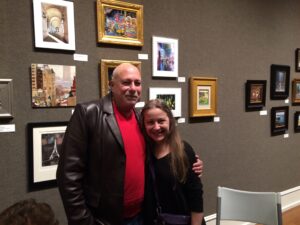
Of course, by then, the Parachute Jump, once part of Steeplechase Park, had been closed for years, its parachutes and rigging long gone. That day, those days, have stayed with me ever since. And when, as a teenager, I would go back to Coney Island with my friends, get high and ride the Cyclone, I would always look up at the Parachute Jump. It came to symbolize my dad to me. Mighty, impressive, but abandoned, and powerless. I loved my dad because I could see past his bluster. He let me see past it. All because of those few Sundays in Coney Island.
As if by osmosis, Coney Island began imposing itself in my work. My series character, Moe Prager, worked in the Six-O precinct in Coney Island. Scene after scene in the nine Moe books take place there. Even twenty-plus books later, in my new series, I cannot escape the gravity of Coney Island. It calls to me in a way I cannot explain other than to say it is romance in the way the Romantic poets understood it.
In my Edgar Award–nominated short story “The Terminal,” I wrote this:
“…He liked how Coney Island displayed its decay as a badge of honor. It didn’t try to hide the scars where pieces of its once-glorious self had been cut off. Stillwell Avenue west was like a showroom of abandonment, the empty buildings wearing their disuse like bankrupted nobility in frayed and fancy suits. He had come to the edge of the sea with the other last dinosaurs: the looming and impotent Parachute Jump, the Wonder Wheel, Nathan’s, the Cyclone.”
I could never have written those words in that way had I grown up in Washington Heights or Rego Park. New York City poets and writers are shaped by their families, yes, but shaped as much by where as by who. That is the magic of New York. This book will shine a light on the rest of that magic. By the way, my children and I have slightly different tattoos of the Parachute Jump: My son and I on our forearms; my daughter on her triceps. In those tats my dad and the Coney Island that was will live on.
—Reed Farrel Coleman, July 2021
Visit All the Stops on the New York: Give Me Your Best or Your Worst Partners in Crime Book Tour
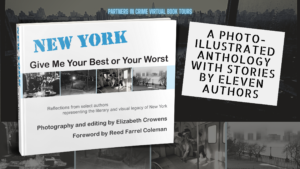
10/25 Guest post @ Cozy Up With Kathy
10/25 Interview @ Novels Alive
10/26 Guest post @ Nesies Place
10/26 Interview @ Author Elena Taylors Blog
10/27 Guest post @ The Book Divas Reads
10/28 Podcast @ Blog Talk Radio
10/28 Review @ Just Reviews
10/29 Interview @ I Read What You Write
11/01 Showcase @ nanasbookreviews
11/02 Review @ Blogging With A
11/03 Showcase @ Archaeolibrarian – I Dig Good Books!
11/05 Showcase @ Quiet Fury Books
11/06 Review @ One More Book To Read
11/08 Review @ Celticladys Reviews
11/08 Review @ jayme_reads
11/09 Review @ Cozy Up With Kathy
11/10 Review @ Wall-to-wall Books
11/11 Review @ flightnurse70_book_reviews
11/12 Review @ The World As I See It
11/13 Review @ Book Reviews From an Avid Reader
11/15 Review @ Books, Ramblings, and Tea
11/16 Review @ I Read What You Write
11/16 Review @ Novels Alive
11/17 Showcase @ CMash Reads
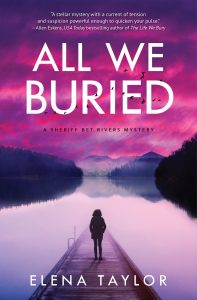 Elena Taylor is the author of All We Buried, available now in print, e-book, and audio book format at all your favorite bookstores and on-line retailers.
Elena Taylor is the author of All We Buried, available now in print, e-book, and audio book format at all your favorite bookstores and on-line retailers.
For more information on All We Buried, click on the link here to visit the home page.
Silver Falchion Award Finalist, Best Investigator 2020
Foreword INDIE Award Finalist, Best Mystery 2020

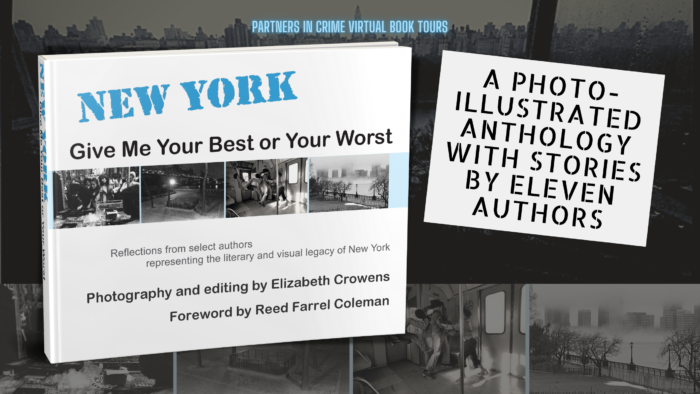
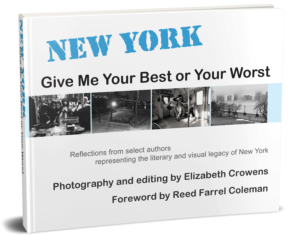
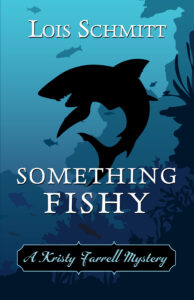
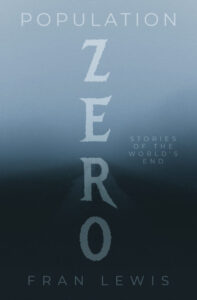
Very fun and interesting interview! I am ordinally from upstate NY, Ithaca area, and my bragging rights are that – within a half hour we had over 40 wineries!!!! Haha! And now living in central PA, which I do love, I greatly miss going to the wineries.
Thanks so much! I have this book and I can’t wait to dive into it. 🙂
It looks amazing! I love NY, I need to get my hands on this one 🙂